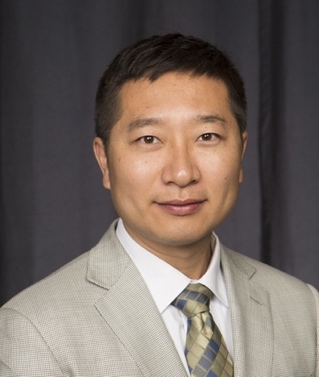| 个人简介 | |
|---|---|
 Prof. Ping He Department of Mechanical Engineering, Lamar University, USA |
|
| 标题: Fluid Mechanics Study of a Liquid Droplet sitting on a Horizontal or Inclined Substrate: Developing a Navier-Stokes Slip Boundary Condition based on Experiments and Simulations | |
| 摘要: We propose a Navier-Stokes type slip boundary condition in the contact line dynamics. To validate our model, a water droplet, whose volume is on the order of 10 microliters, sitting on a horizontal or inclined plane has been studied both experimentally and numerically. Different droplet sizes with plane tilted angles and two substrates (Teflon and copper) have been investigated. Our model predicts the equilibrium, advancing and receding contact angles consistent to the experimental results. When the substrate is inclined before reaching a critical angle, we observe the contact angle hysteresis. An adhesive tension, equivalent to the concept of the line tension, at the contact line is applied to predict (1) the contact angle hysteresis, and (2) the critical tilted angle, when the droplet starts to slide down. For each substrate surface, two maximum adhesive tensions at the advancing and receding sides of the contact line are computed based on the comparisons between simulations and experiments. Results show that the same maximum adhesive tensions are captured for all four droplet sizes on the same substrate surface. | |
| 简介: Dr. Ping He received his B.S. in Theoretical and Applied Mechanics from Fudan University in 2005, and Ph.D. in Mechanical Engineering from Clemson University in 2011. From 2011-13, Dr. He worked as a junior faculty in the Department of Engineering Mechanics, College of Civil Engineering at Southeast University in Nanjing. From 2013-16, He joined MIT as a Postdoctoral Associate, and was promoted to Research Scientist in the Department of Mechanical Engineering. He is currently Assistant Professor in the Department of Mechanical Engineering at Lamar University in Southeast Texas. Dr. He’s research focuses on complex modeling of interfacial phenomena, fluid-structure interactions, and supercritical fluids. | |
